Mouth-to-Mouth Rescue Breathing
Mouth-to-mouth is often necessary in a CPR procedure, especially when a bag-mask or pocket mask is not available. It is a very effective way to provide oxygen to the patient’s lungs without setting this person up for risks. Note that 17% of the exhaled air will be composed of oxygen and 4% of it will be carbon dioxide. This is in comparison to the 100% available oxygen ventilation with 100% high-flow oxygen and the 21% oxygen that is available in room air that we breathe.
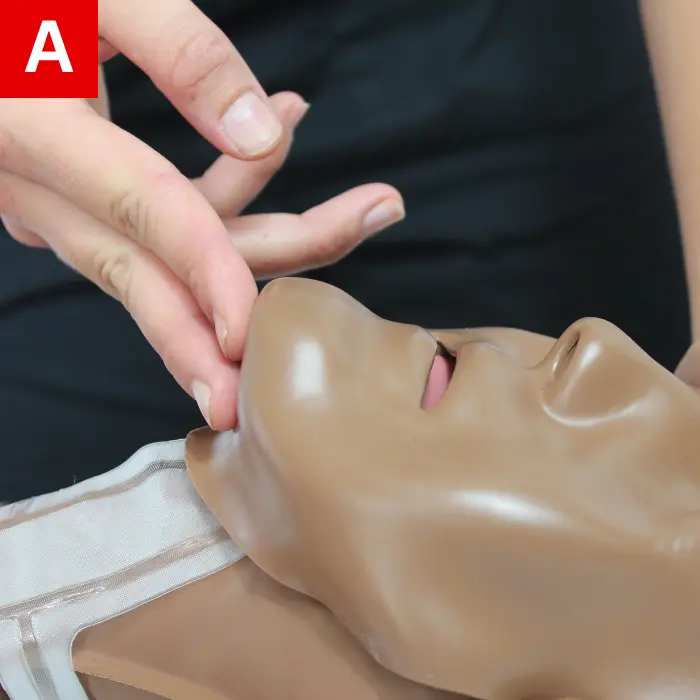
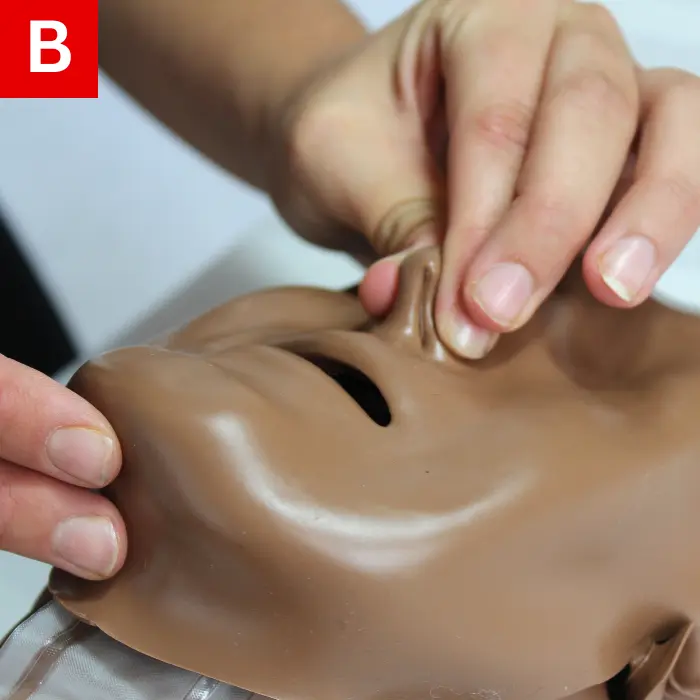
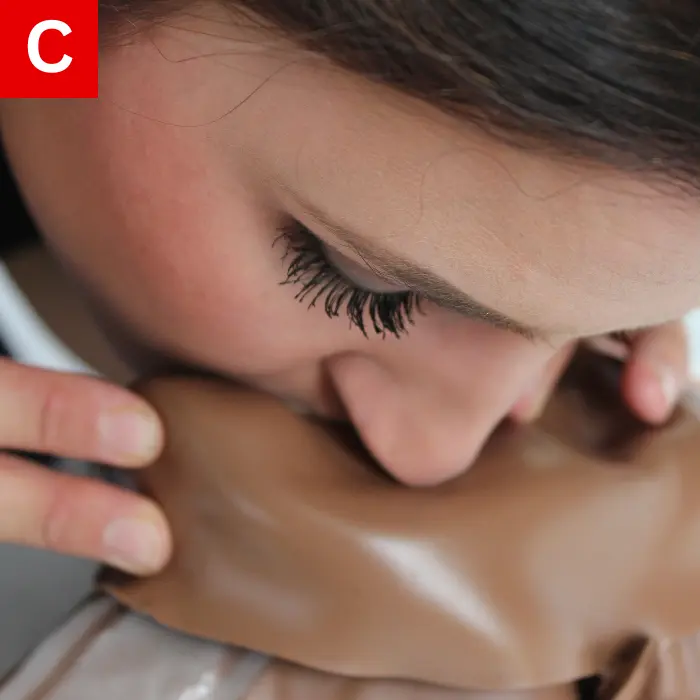
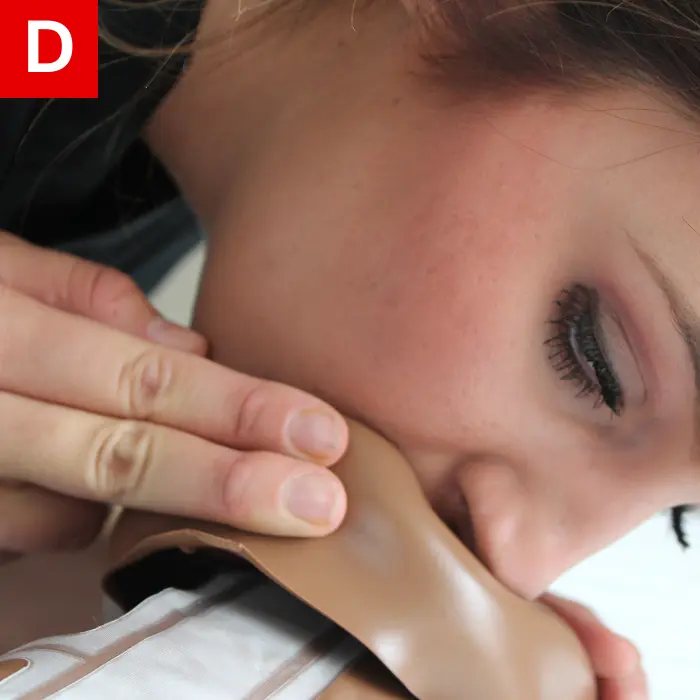
Figure 13
Mouth-to-Mouth for Adults and older Children
Do not release breaths too fast or too forcibly. This forces the air into the area of the stomach, which may then lead to distention and a significant decrease in lung expansion. Additionally, it may lead to further problems such as vomiting.
To execute mouth-to-mouth breaths, follow these steps:
- Use the head-tilt/chin-lift maneuver to open the infant’s airway. Do not hyper-extend the neck (Figure 13a).
- Keep the patient’s nose closed by pinching the nostrils closed with your hand while your other hand is on the person’s head (Figure 13b).
- Create a seal when using your lips to surround the person’s mouth (Figure 13c).
- For one full second, release a blowing breath into the person’s mouth and pay attention to his or her chest. Reposition the airway if his or her chest does not rise when you give the blow (Figure 13d).
- Release an extra breath lasting more than a second.
- If the chest fails to rise and fall after two breaths, proceed with chest compressions.
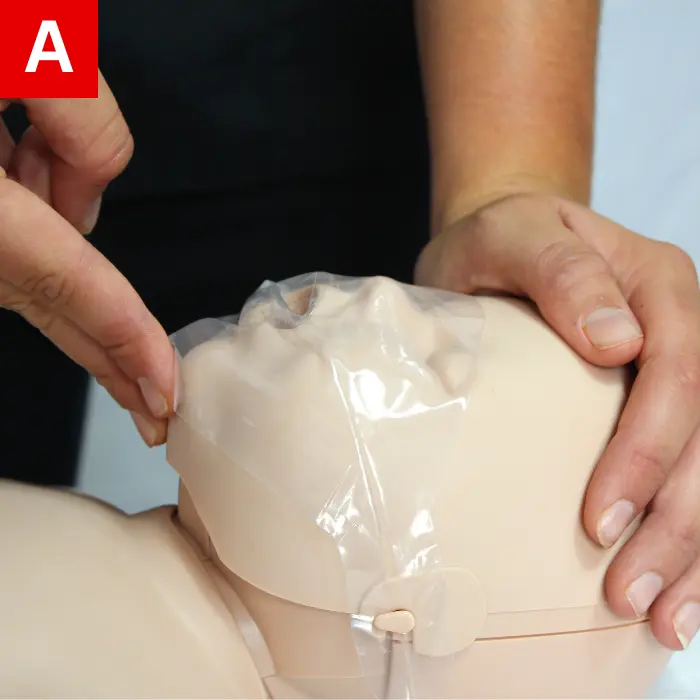
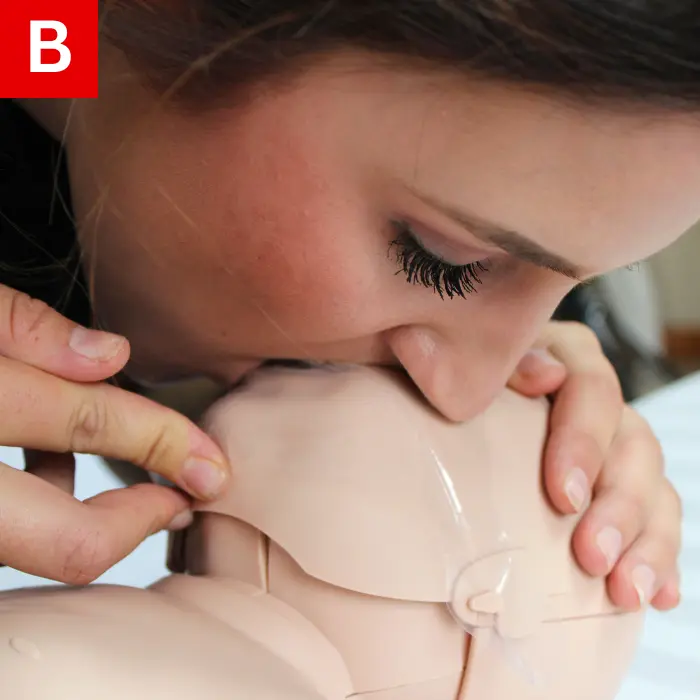
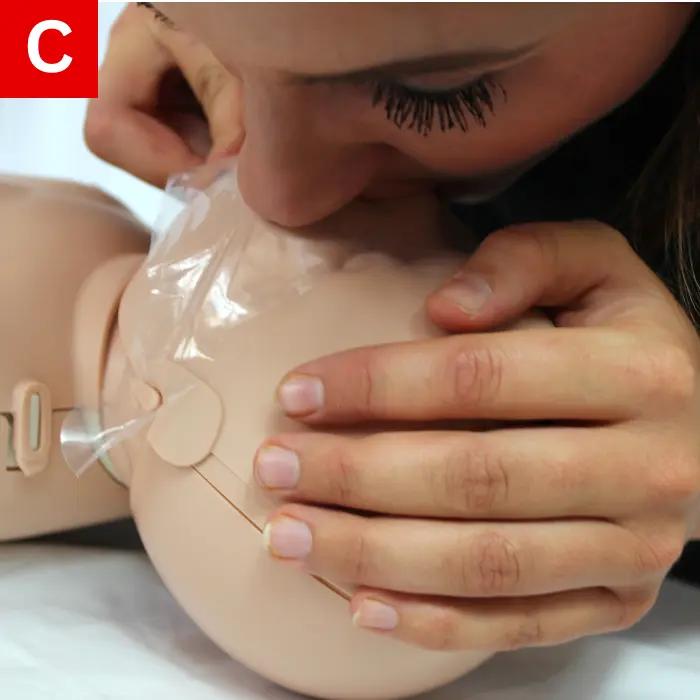
Figure 14
Mouth-to-Mouth/Nose for Infants
Cover the infant’s mouth and nose whenever performing a rescue procedure on an infant and then follow these steps:
- Pry open the infant’s airway using the head-tilt/chin-lift maneuver. Do not hyper-extend the neck. Aim for a neutral position (Figure 14a).
- Use your mouth to cover the infant’s nose and mouth (Figure 14b).
- For no more than one second, release a blowing breath into the infant’s nose and mouth (Figure 14c). Remember that infants possess lungs much smaller than an adult’s, which means less force and a smaller amount of air is necessary when carrying out this step. Pay attention to the rising and falling of the chest. If you do not observe any changes from the chest, tilt the infant’s head.
- Release an extra breath lasting more than a second. If it is impossible for you to cover the infant’s mouth and nose areas with your entire mouth, follow these steps:
- Open the airway using the head-tilt/chin-lift maneuver.
- Pinch the infant’s nose closed.
- Seal the infant’s mouth using your lip.
- Release gentle blows into the baby’s mouth for at least a second. Remember that infant’s lungs are much smaller than those of adults, which means less force and a smaller amount of air are necessary when carrying out this step. Pay attention to the rising and falling of the chest. If you do not observe any changes from the chest, tilt the infant’s head.
- Release an extra breath and wait for the chest to rise.
